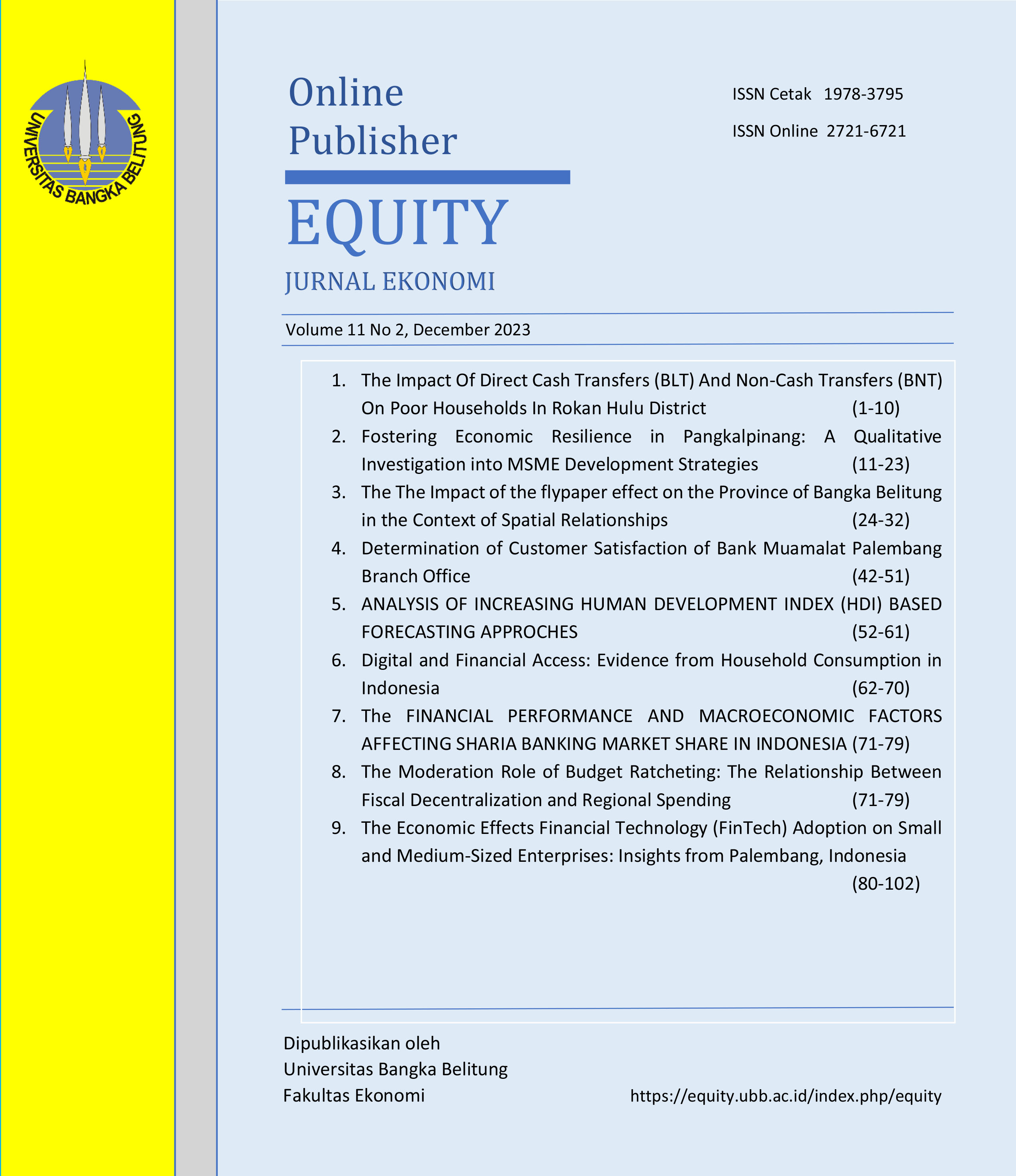The Impact of the flypaper effect on the Province of Bangka Belitung in the Context of Spatial Relationships
DOI:
https://doi.org/10.33019/equity.v11i2.194Keywords:
Panel Spatial, SDM, Spillover, The flypaper effect, Bangka BelitungAbstract
Local governments must ensure proper financial management by carefully planning the allocation of regional funds (such as DAU/DAK/DBH) and expenditures (BELANJA), as well as maximizing effective and efficient income (PAD). However, the funds received by the regions from the central government are being used in an uneven manner, referred to as the flypaper effect. Despite this, the local government's expenditures have failed to close the fiscal gap and the amount of regional funds being used is greater than the amount of regional income. This study trains to examine the presence of the flypaper effect in Bangka Belitung and the impact of spatial elements on it. Utilizing data from 2006 to 2020 and employing a modified row normalized queen contiguity modified matrix with direct transportation connection, the research objectives were deployed. The study utilized the Spatial Durbin Model (SDM) to analyze the data. The findings indicated the presence of the flypaper effect in the Bangka Belitung Islands with spatial dependencies between 2006 and 2020. And only the Decentralized Allocation of Funds (DAU) was affected by the flypaper effect when there was spatial interdependence in Bangka Belitung. The influence of DAU on regional expenditure (BELANJA) was stronger than its effect on regional income (PAD). Increasing BELANJA in one jurisdiction would lead to an increase of 37 percent in other regions. The spillover effect of the decomposed lump-sum grants was related only to DAU in the context of spatial relationship. Local expenditure in Bangka Belitung was dependent on other locals.
Downloads
Downloads
Published
Issue
Section
License
Authors who publish journals in Equity: Jurnal Ekonomi agrees with the following conditions:
1. Authors retain copyright and grant the journal right of first publication with the work simultaneously licensed under a Creative Commons Attribution 4.0 International License.
2. Authors are able to enter into separate, additional contractual arrangements for the non-exclusive distribution of the journal's published version of the work (e.g., post it to an institutional repository or publish it in a book), with an acknowledgement of its initial publication in this journal.
3. Every publication (printed/electronic) are open access for educational purposes, research, and library. Other than the aims mentioned above, the editorial board is not responsible for copyright violation.













